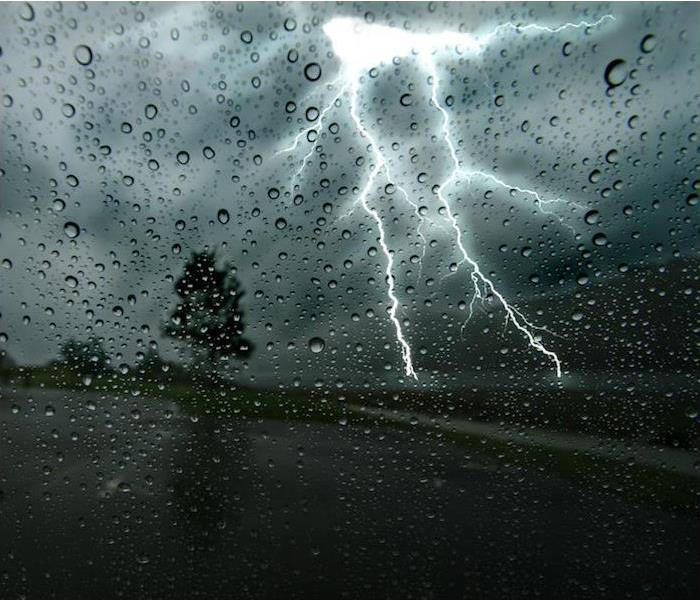What Makes a Thunderstorm “Severe”?
7/14/2021 (Permalink)
Thunderstorms can pop up at any moment. Contact SERVPRO of St. Joseph if you experience any damage.
Missouri is no stranger to inclement weather, especially thunderstorms. These types of storms typically come our way in the spring and summer months.
Many thunderstorms can pass through our area without much notice or damage, but others are quite capable of causing serious damage to property and people. But how do you know how threatening these storms will be? A simple distinction in the forecast: “severe.”
A thunderstorm watch or warning means that a storm is coming that has thunder and lightning. A severe thunderstorm watch or warning means that you can expect thunder and lightning, as well as hail that is at least one inch in diameter and straight-line winds that register as at least 58 miles per hour.
The Differences Between a Thunderstorm and a Severe Thunderstorm
Lightning strikes. Lightning is certainly one of the most dangerous parts of a thunderstorm, being responsible for injury to people (reportedly 300 injuries every year) and damage to property. Lightning is able to start house fires and strike and fell trees onto permanent structures. Because thunder is a result of lightning, you can’t have one without the other, so if you hear thunder, there will be lightning within a 15-mile radius.
Hail damage. Hail that is associated with severe thunderstorms has to be at least one inch or larger, but hail has the ability to grow to softball size under the right conditions! Given the size and speed at which it falls, hail is able to cause considerable damage. If cars are uncovered, pets or people are exposed to the elements, and shingles and siding are impacted, the damage could be very serious.
Flash flooding. While it would be logical to believe that flooding isn’t possible in non-designated flood plains, flash floods are possible anywhere under the right conditions: heavy rain, clogged storm drains, overfilled roadside ditches and other hazards. Flooded roadways are extremely susceptible to hydroplaning, flood damage to vehicles, and even taking a car away with the tide.
Thunderstorms can cause damage to businesses and homes that require professional recovery assistance. As a leader in the restoration industry, we are committed to helping you get your property back to pre-storm condition. Contact us to find out how we can help!






 24/7 Emergency Service
24/7 Emergency Service
